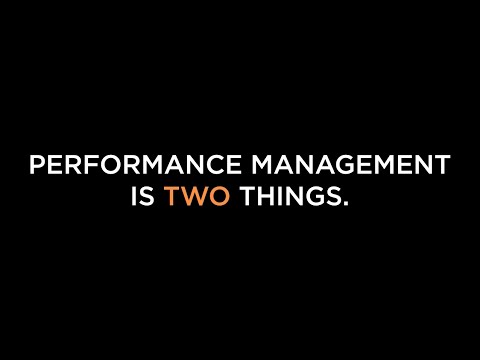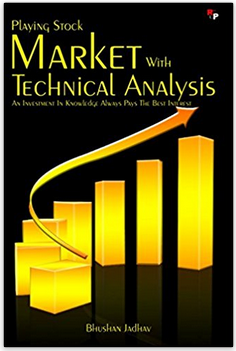

Figure 18.3 compares next year’s possible payoffs to the creditors and stockholders of these two firms. The only differences occur when next year’s asset value turns out to be less than $1,000. Suppose that next year, the assets of each company are worth only $500. They have to cough up $500, the difference between asset value and the bondholders’ claim.
However, these guarantees also encouraged imprudent risk-taking that caused instability in the very system the safety net was supposed to protect. This may include cutting staff or even cutting back on management incentives, which can often be costly to a business’s bottom line. This point is the optimal capital structure and it is the point where the value of the firm is maximized. Capital structure irrelevance theory of Merton Miller and Franco Modigliani.

Debt ratios in other industrialized countries are equal to or higher than those in the United States. Many of these countries have imputation tax systems, which should eliminate the value of the interest tax shields. With hindsight, we see that Enron was playing many of the games that we described earlier in this section. It was borrowing aggressively and hiding the debt in special-purpose entities . The SPEs also allowed it to pump up its reported earnings, playing for time while making more and more risky investments.
The answer is “yes and no.” On the “yes” side, the trade-off theory successfully explains many industry differences in capital structure. High-tech growth companies, whose assets are risky and mostly intangible, normally use relatively little debt. Airlines can and do borrow heavily because their assets are tangible and relatively safe. Could Fledgling be kept as a going concern through default and reorganization?
What is meant by financial distress?
If the loan to the distressed firm was a significant asset for the creditor, default of the firm may lead to financial distress for the creditor. Companies in bankruptcy may also need to liquidate assets that are more valuable if kept. What happened to this business when it became clear that Enron was in financial distress and probably headed for bankruptcy?
In contrast, a valuation that ignores risk premia generates an NPV of 1.4%. We show that marginal distress costs can be as large as the marginal tax benefits of debt derived by Graham . Thus, distress risk premia can help explain why firms appear to use debt conservatively. Bankruptcy costs vary for different types of firms, but they typically include legal fees and, losses incurred from selling assets at distressed fire-sale prices, and the departure of valuable human capital. The way to measure bankruptcy cost is to multiply the probability of bankruptcy by the expected cost of bankruptcy. A company should consider the expected cost of bankruptcy when deciding how much debt to take on.
Lenders anticipate monitoring costs and demand compensation in the form of higher interest rates; thus the monitoring costs—another agency cost of debt—are ultimately paid by stockholders. Suppose that court and legal fees are $200 if Ace Limited defaults. Thus, if asset value cost of financial distress turns out to be $500, creditors end up with only $300. Figure 18.4 shows next year’s total payoff to bondholders and stockholders net of this bankruptcy cost. Ace Limited, by issuing risky debt, has given lawyers and the court system a claim on the firm if it defaults.
It would cause lenders to charge them higher interest rates, making it difficult for them to borrow additional money to help them manage a period of reduced income or revenue. InsolventInsolvency is when the company fails to fulfill its financial obligations like debt repayment or inability to pay off the current liabilities. Such financial distress usually occurs when the entity runs into a loss or cannot generate sufficient cash flow. Cash flow is the speed at which the money comes and leaves the business. A company might be making a profit, but the majority of its profits may be accrued. In this case, the company might not have cash at hand to run the day-to-day operations.
While assets don’t cost more when a company is in financial distress, the money borrowed to finance the assets may be more expensive. It is not uncommon for financial institutions and banks to increase the rate charged for borrowed funds when a company is in financial distress. The difference between the new and old cost of funds is the cost of financial distress. It will be interesting to see whether the Tax Cuts and Job Act of 2017 will lead U.S. corporations to rely less on debt. The trade-off theory predicts that the reduction of the tax rate from 35% to 21% will reduce target debt ratios.
Direct Costs of Financial Distress
Credit PeriodCredit period refers to the duration of time that a seller gives the buyer to pay off the amount of the product that he or she purchased from the seller. It consists of three components – credit analysis, credit/sales terms and collection policy. Resolution plans or corporate “living wills” may be an important method of establishing credibility against bailouts.
- Close coordination of the management, credit managers, and other stakeholders is something that the organizations should ensure to avoid such situations.
- A company might be making a profit, but the majority of its profits may be accrued.
- If we remove that assumption, then taking on more debt does not necessarily lower the WACC.
- When you learn the link between money and mental health, you can navigate the future with confidence and clarity in this uncertain time.
- Financial distress happens when revenues or income no longer meet or pay for the financial obligations of an individual or organization.
Suppose we repeat the story of Heartbreak Hotel for Fledgling Electronics. The value of the hotel is, of course, much less than you hoped, but that is due to the lack of guests, not to the bankruptcy. The direct bankruptcy costs are restricted to items such as legal and court fees, real estate commissions, and the time the lender spends sorting things out. The total value of the firm goes up by $15 ($10 of new capital and $5 NPV). The bondholder receives a capital gain of $8 because the firm’s assets include a new, safe asset worth $15. The probability of default is less, and the payoff to the bondholder if default occurs is larger.
If you don’t management your prices, you might start to chop spending in areas such as advertising, which can lead to a loss of sales. Perform a price range variance analysis every month to see if you’re on monitor with your income and expense projections and take proactive steps to handle any issues you find earlier than it’s too late. Individuals experiencing financial distress are twice as likely to show signs of poor health and are four times more prone to complain of ailments, as per a report published by Forbes.
Adam Hayes, Ph.D., CFA, is a financial writer with 15+ years Wall Street experience as a derivatives trader. Besides his extensive derivative trading expertise, Adam is an expert in economics and behavioral finance. Adam received his master’s in economics from The New School for Social Research and his Ph.D. from the University of Wisconsin-Madison in sociology. He is a CFA charterholder as well as holding FINRA Series 7, 55 & 63 licenses. He currently researches and teaches economic sociology and the social studies of finance at the Hebrew University in Jerusalem. A solvency ratio is a key metric used to measure an enterprise’s ability to meet its debt and other obligations.
The present value of distress costs therefore depends on risk premia. We estimate this value using risk-adjusted default probabilities derived from corporate bond spreads. For a BBB-rated firm, our benchmark calculations show that the NPV of distress is 4.5% of predistress value.
What happens financial distress?
In other words, the project in question is a “typical” project that the firm usually takes on. In this case, the relevant discount rate for the project is based on the risk of the firm. So why do we use Adjusted Present Value instead of NPV in evaluating projects with debt financing?
But DeAngelo and Roll find the debt ratios of individual companies have fluctuated dramatically when tracked over decades. For example, IBM’s book debt ratio peaked at about 40% in the mid-1950s, fell to nearly zero in the mid-1970s, and rose again to about 30% at the turn of the century. International Paper’s debt ratio fluctuated between 20% and 40% between 1909 and the end of World War II, then fell to zero until the mid-1960s, when it popped back into the 20% to 40% range.
# Loss of Suppliers
Daunting as such numbers may seem, they are not a large fraction of the companies’ asset values. Lawrence Weiss, who studied 31 firms that went bankrupt between 1980 and 1986, found average costs of about 3% of total book assets and 20% of the market value of equity in the year prior to bankruptcy. Individuals who experience financial distress may find themselves in a situation where their debt servicing costs are much more than their monthly income. These debts or obligations include items such as home or rent payments, car payments, credit cards, and utility bills.
2 percent plus 7.5 percent is 9.5 percent which is the weighted average cost of debt. All in all, this trade-off theory of capital structure choice tells a comforting story. Unlike MM’s theory, which seemed to say that firms should take on as much debt as possible, it avoids extreme predictions and rationalizes moderate debt ratios. Also, if you ask financial managers whether their firms have target debt ratios, they will usually say yes—although the target is often specified not as a debt ratio but as a debt rating. For example, the firm might manage its capital structure to maintain a single-A bond rating.
However, it’s important to understand that an effective finance specialist is a necessary funding within the firm’s future health and wellbeing. The threat of not hiring an professional far outweighs the price of bringing one on. The foremost measure is to seek help on personal finance management and gain investment ideas from a reputed finance expert or wealth management company like Dezerv. When you learn the link between money and mental health, you can navigate the future with confidence and clarity in this uncertain time. With this, remember to eat right, make a fitness plan, find safe investment options, plan your spending, set a realistic budget, and build an emergency fund. By doing this, you can balance your financial, physical, and mental health.
The financial supervisor should make sure that margins on jobs are maximized by way of cost restoration. As used here, “value recovery” refers to those conditions in which the right recording of job costs affects the revenues earned. The clearest example is time and material contracts, under which the contractor payments allowable prices to the client, with a proportion or stipulated amount added for overhead and revenue.